As I neared the completion of my On30 Wiscasset, Waterville & Farmington Railway, I knew some additional rolling stock would be needed to fill out the roster. Since this is a small layout with limited space, I wanted to scratchbuild a boxcar that had some interesting history or character. Boxcar #312 provided both.
Number 312 started life as Wiscasset & Quebec Boxcar #34. It was part of a 5-car order of 28-foot cars built by Portland Company in 1895 for the W&Q, predecessor of the WW&F. The cars were numbered #31 through #36. They had a low roof, giving them a “squatty” appearance.
To start the build, I used a Peter Barney drawing published in his book: The Wiscasset, Waterville & Farmington Railway: A Technical and Pictorial Review. I sketched the layout of the frame, taking into account the 1/32-inch-thick sheathing. The underframe was built using 1/16- x 1/8-inch pre-stained basswood strips. Using pre-stained wood strips makes weathering the car later easier. The decking was covered with wood coffee stirrers purchased from one of those Dollar Stores. The key details, such as queen posts, were marked and pre-drilled. These would be installed later.
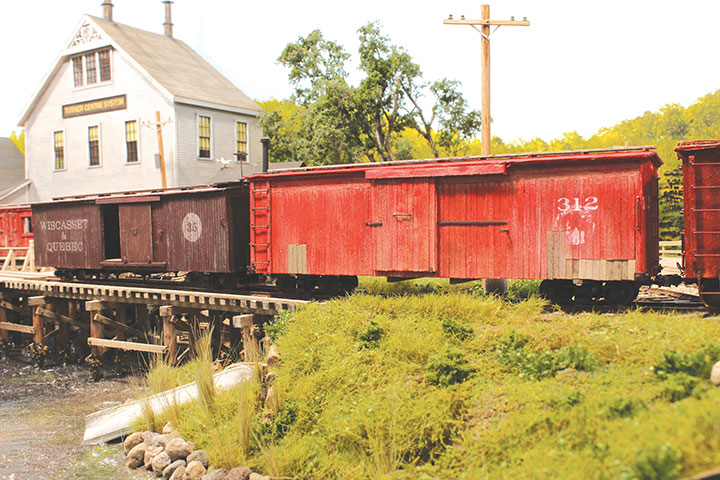
Sometime after 1901, the W&Q was reorganized as the WW&F. The new railroad decided to raise the roof on some of the low roof boxcars, including #34. The rebuilds were renumbered and #34 became #312, part of the 300 Series. To raise the roof, the railroad simply added pieces of wood to the vertical posts to increase the height, and reinforced the joint with metal plates, all inside the car. The new gap along the top was sheathed with boards running horizontally that gave the car a very distinctive appearance.
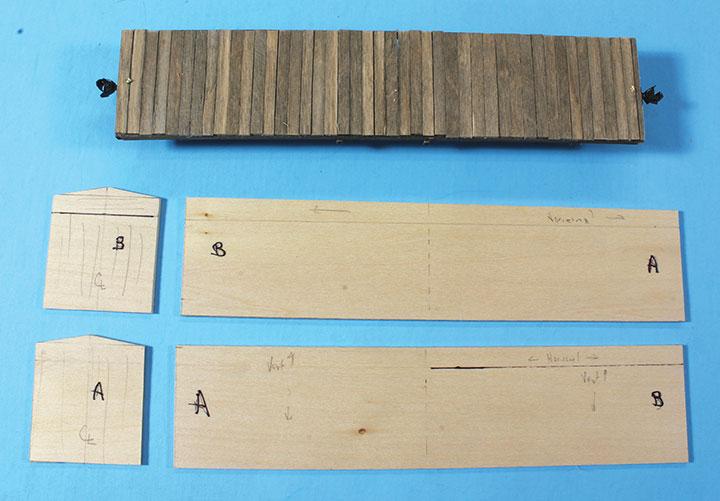
I already had built Boxcar #35 from a Train Troll kit. I referenced it and many photos of #312 published in books and on-line. I found many photos of this car in Narrow Gauge in the Sheepscot Valley by Gary Kohler and Chris McChesney. There are 6 volumes in the series that contain a wealth of photos and information.
As the cars aged, the railroad fixed only what was needed to keep the car in service. Some of the repairs included cutting away rotted areas of the sheathing and patching it with new siding. Over the years, one half of one side was re-sheathed, eliminating the patches and the horizontal boards. These layers of repairs resulted in a very interesting look to #312.
I cut my car body from 1/16-inch-thick basswood glued to create the core of the car. Areas were marked to locate the horizontal boards and patches using prototype photos as a guide. The horizontal boards along the top were installed using 1/32- x 3/32-inch pre-stained strips. The core was then glued to the frame/decking assembly with wood glue.
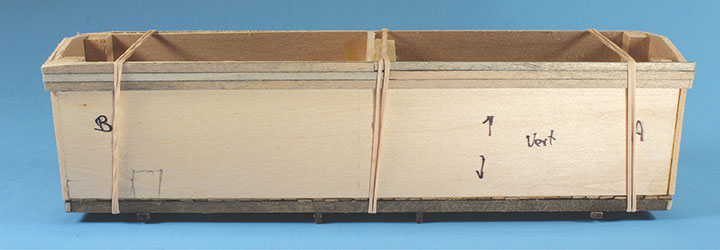
The vertical sheathing was installed with pre-stained wood, leaving the patched areas blank. The car was painted boxcar red using a dry-brushing technique. This gives the car a faded weathered look. The circular car number 34 decals were left over from the Train Troll kit. These were applied to both sides and allowed to dry completely. Then the area was sanded with 600-grit sandpaper to remove most of the graphics, giving it a “ghost” effect. The new number 312 was applied using Woodland Scenics dry transfers.
Wood strips were cut to fit the patched areas. These represent patches installed and waiting for paint. The grab irons, ladder rungs, and other exterior siding details were added to complete the body.
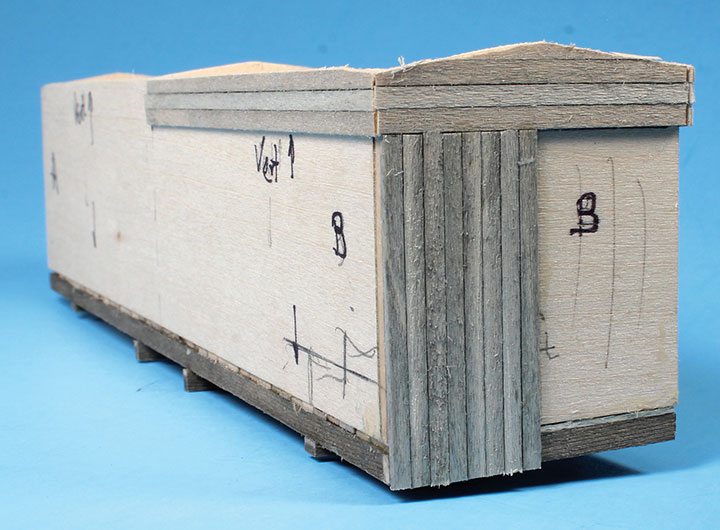
For many years, I believed the Maine 2-foot railroads covered the roofs of their boxcars with a painted canvas. The latest information using surviving cars and historic documents indicate the roofs were covered with tin panels. The panels were 20 x 27 inches laid with an overlap in a staggered pattern. Half-width panels were used on the ends when needed.
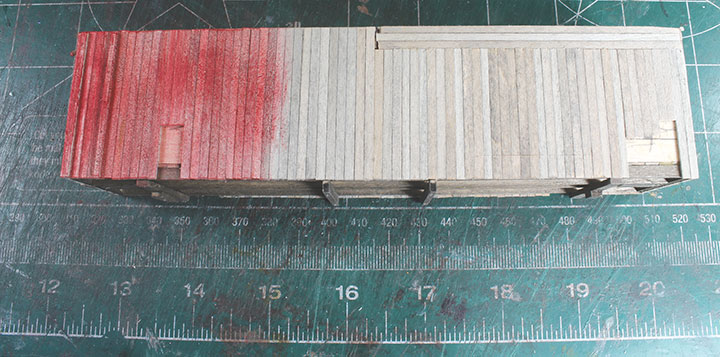
To produce this effect on my model, I drew a grid on the wood roof with a straightedge and a pencil. The entire surface was coated with Woodland Scenics Tacky Adhesive. This glue stays tacky for weeks. To provide a slightly raised area of the seams, .008-inch wire was cut and placed along the grid. This was quite tedious, but watching old TV westerns while cutting and fitting each wire made it tolerable! The wire grid was covered with thin foil duct tape. This tape is very thin and NOT the DUCT tape famous for holding everything! A light burnishing with a pencil eraser brought out the details of the seams.
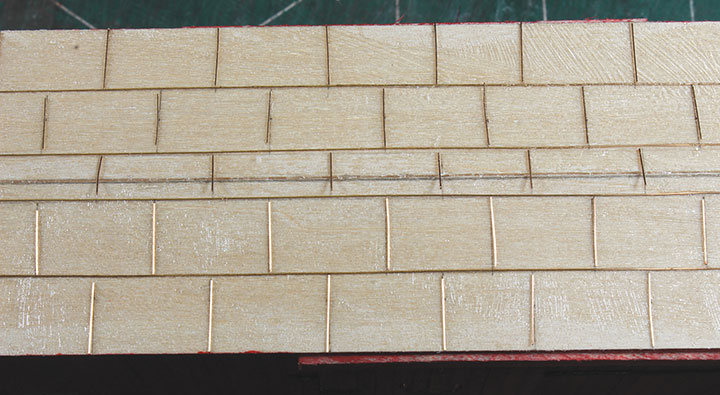
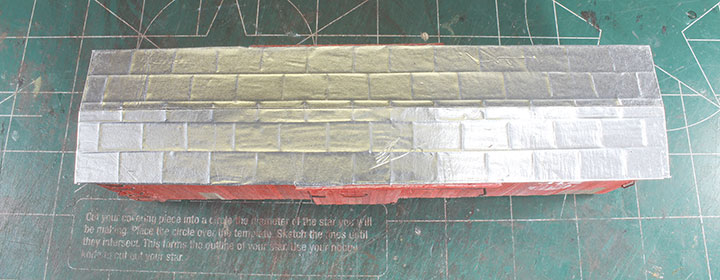
The roof received two heavy coats of a matte clear finish to give it some tooth for painting. A few coats of boxcar red were applied. Then the roof walks were installed using pre-stained wood strips. The roof walks were not painted because painted wood gets slippery when wet. Unpainted wood is less so. Weathering on the roof consisted of layers of artist acrylic paint and various Pan Pastels.
The prototype car was fitted with vacuum brake connections. The WW&F used Eames vacuum brakes on some of their cars. The system wasn’t very efficient and was unlikely to stop a train on its own. The crews relied more on the hand brakes to slow or stop a train.
The vacuum brake piping and hoses were fabricated with parts from various Grandt Line sets and brass tubing. The brake shoes are from Mount Blue Models and were installed on one truck. An Eames vacuum brake cylinder casting from Coronado Scale Models (BC-141) was installed to the underframe. The rest of the brake piping under the car was eliminated since it will never be seen on the layout.
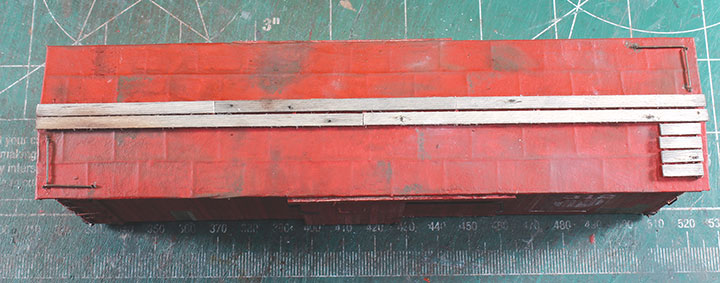
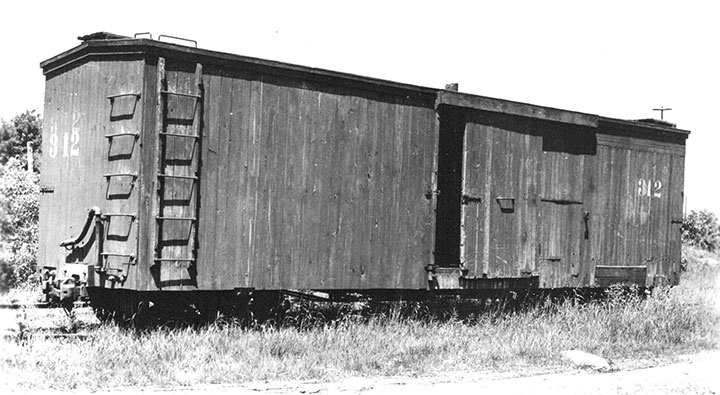
-Photo collection of Ed Bond.
Grandt Line #69 three-inch queen posts were installed in holes drilled in the needle beams. The truss rods are .025-inch wire with Grandt Line Turnbuckles. Stirrup steps are Tichy Train #2007 parts. I added Grandt Line On2 trucks with HO gauge wheel sets and Kadee #144 couplers to complete my model of #312.
Boxcar 312 ran on the railroad until service ended in June 1933. It then was used as a shed in Coopers Mills and currently resides at the Boothbay Railway Village in Boothbay Harbor, Maine. That makes this car over 125 years old! Adding this car to the roster brings a bit of its history and interest to the layout. It will carry loads of hay, canned goods, and other products shipped along my Wiscasset, Waterville & Farmington layout.
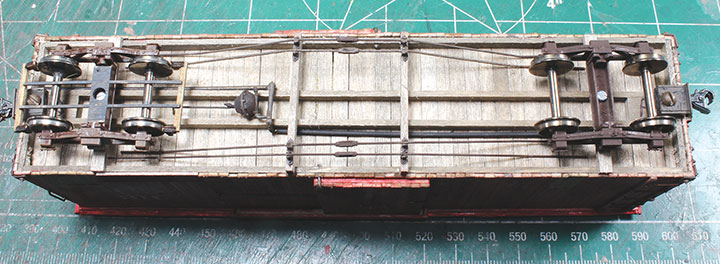
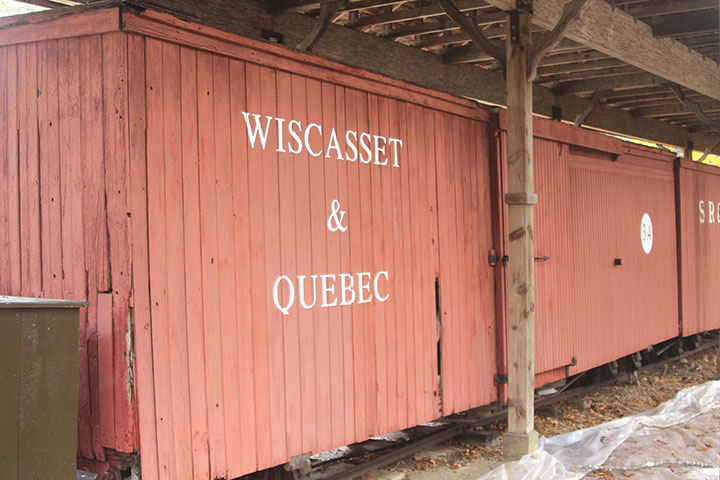
-Photo by Bob Bennett.